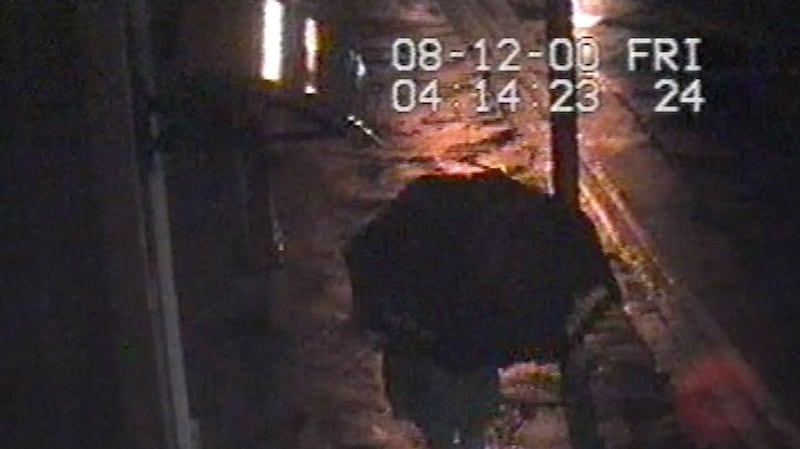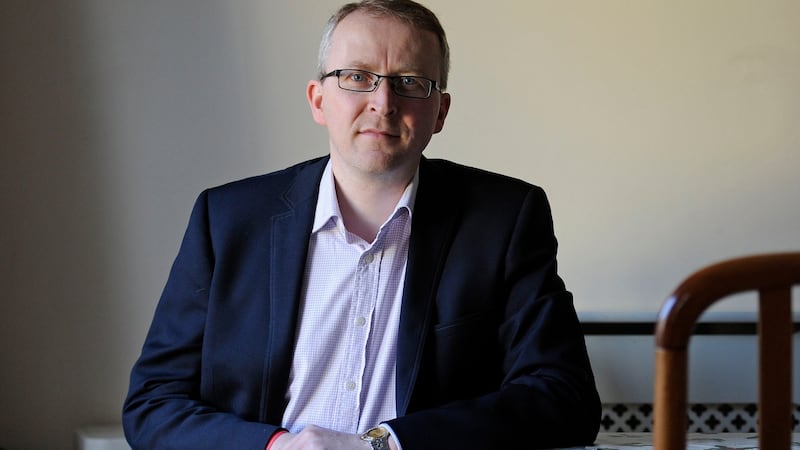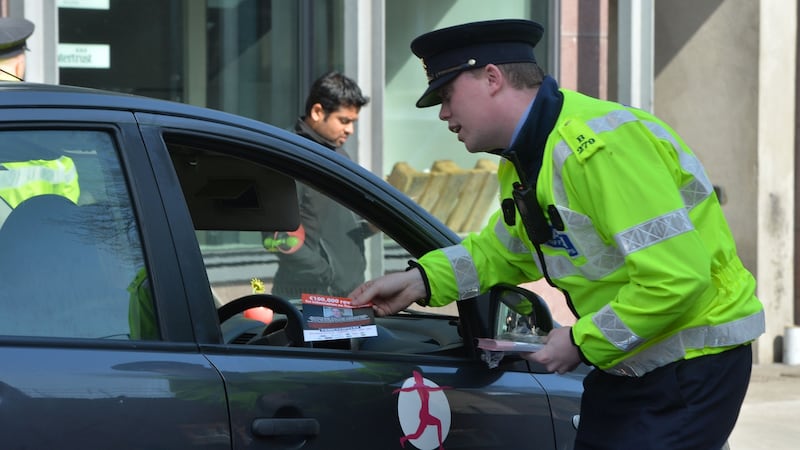On Thursday this week, it was announced by An Garda Síochána that the six-week search for Trevor Deely’s remains had ended without success. Since August 14th, an intensive search had been taking place at a sealed-off three-acre area of wasteland in Chapelizod in Dublin, close to the R112.
The forensic examination of the site and adjacent river was initiated by information that had recently been received by gardaí, from what they described as a credible source. This information suggested Deely had been shot dead by a well-known criminal after a chance meeting on the night he disappeared, in December 2000, and his body concealed somewhere in this wasteland.


The announcement at a press conference on August 12th of this new investigation at Chapelizod had been by far the most dramatic development in a case that has mystified and compelled the public for almost two decades.
In the early hours of December 8th, 2000, Deely (22), from Naas, Co Kildare, disappeared on his way home, after attending his office Christmas party. An employee of Bank of Ireland Asset Management, he had spent the early part of the previous evening with his colleagues.
They first went to Copper Face Jacks, then had a sit-down dinner at the Hilton Hotel, and ended the celebrations in Buck Whaleys nightclub on Lower Leeson Street.
Deely left the nightclub shortly after 3.25 am. That night, the wind velocity was between 60m/h and 70m/h, and there was heavy rain. He did not have an umbrella with him, but the Bank of Ireland office where he worked was very close by, on Leeson Street Bridge, and he headed there.
In April of this year, additional information emerged about what happened when Deely came and went from his office on that night. CCTV footage at the entrance to the office had already established that Deely had used his pass to open the gate soon after 3.35am, and that he had left again at 4.02am, with an umbrella.
Footage captured on CCTV from the bank entrance on that night was sent to Britain some months ago, and was re-examined, using specialised software to significantly enhance the existing images.
Random encounter
In April, those enhanced images revealed that while Deely was still in Buck Whaleys nightclub down the road, from 2.59am, a man was standing outside the office, partly shielded by a pillar. He waits there, in the rain and wind, with no umbrella, until Deely arrives at 3.34am. At that point, he then steps forward, the two exchange some words (the CCTV has no audio), and Deely goes inside. It is clear from the circumstances that this is an entirely random encounter.
That man was not in CCTV range when Deely emerged at 4.02am, when he left his umbrella down before buttoning up his coat, and walking away. At 4.06am, Deely made a phone call to his closest friend, Glen Cullen, who did not hear the phone ringing, as it was charging downstairs.
He left a voicemail, which Cullen deleted the following morning. "It said, 'Hi Glen, I've missed you there. Just on my way home, all going good. I'll talk to you tomorrow.' Or words to that very close effect," Cullen told The Irish Times two years ago, when interviewed for a three-part series on Deely's disappearance.
At 4.14am, the last known sighting of Deely was captured on the CCTV camera outside the Bank of Ireland on Haddington Road (now a Milano’s Pizza). Moments later, the same camera also captures a man scurrying along, half-walking, half-running, in the same direction as Deely.
When the video of the enhanced footage was released in April, gardaí stated that they were satisfied that this man was the same person who was standing outside Deely’s office earlier, and who had spoken to him. That man has never been identified, and has never come forward, despite numerous appeals over many years.
After the release of the enhanced footage, a team of gardaí was established to make a complete review of all the evidence in the case.
Youngest child
Trevor Deely grew up in Naas, the youngest of a family of four; his siblings are Mark, Michele and Pamela. His parents, Michael and Ann, are still alive. He was more than 6ft tall, with vivid red hair that helped make his "Missing" posters so memorable. He tried out a couple of different career options, before being guided by his sister Michele towards a computer course.
“It was like turning a key in a lock,” she said. “He had finally found what he really enjoyed, and he seemed to be really good at it as well.”

Deely had three job offers after he finished his course, and on the advice of his father, chose the one at the bank. His former manager there, Daragh Treacy, recalls a happy, sociable and focused employee. “He never bitched about other people or gave out about them. He had a very good work ethic. He was very trustworthy. I’m not just saying this because of the situation, but Trevor was a good guy.”
It was Treacy who first raised the alarm, when Deely failed to turn up for work, not just on Friday, December 8th, but on the following Monday. The non-appearance on Friday, the day after the party, had been noted by his employer, but “let slide, on that basis that, look, it was a late night,” as Treacy puts it.
On Monday, when Deely yet again failed to appear for work, and after an increasingly-concerned Treacy had first established that nobody had spoken to him over the weekend, he went to human resources. “We have a problem,” he told them. “This guy is not to be found. What should we do?”
“What should we do?” is the question Trevor Deely’s family, friends and colleagues kept trying to answer, over the days, weeks, months and years that eventually followed. In the immediate days after it was established that Deely was now a missing person, they all rallied together in a remarkable collective effort to try to discover what had happened to him, and where he now was.
Public appeal
This was 2000, years before social media, now an invaluable resource in any similar dreadful situation, and where most such campaigns begin. The Deely family did not have the tools of Facebook and Twitter to help them spread the word to the public about their missing son and brother.
What they did have was their own determination, strength of character and tenacity. They also had the consistent support of many of Deely’s friends and colleagues, in addition to their own circles.
Over the days that followed, this team of people put up hundreds of laminated posters, distributed thousands of leaflets, went into Dublin’s shops, pubs, clubs, and restaurants. They stood on street corners and bridges, distributing leaflets. They talked to homeless people, to office workers, to everyone who stopped on the street when they saw the leaflets in their hands.
It was a rare lamp-post around Dublin 4 that did not have a poster of Deely’s face with that now-familiar, slightly anxious expression, staring out from it.
“The Deelys set the standard for what families do when someone is missing,” Supt Michael Cryan said, who, in 2015, was the family’s fourth liaison officer. “The town is postered now before we get out the door.”
“They were very proactive. I’ve never worked on a case where the family are so proactive,” said Det Sgt Michael Fitzgerald, who had worked on the case for years.
“I don’t think the police could keep up with us,” Michele Deely said.
CCTV footage
It was one of Deely’s friends, not the Garda, who discovered the footage that recorded the last known sighting of him at 4.14am. Conleth Loonan was then working for a communications company that supplied CCTV equipment. “Being in the business, I would have known back then all the CCTV footage was recorded on VHS video.”
Loonan knew that the recordings on these analogue tapes were either stored only for a short time, or were wiped and recorded over. (Nowadays, CCTV footage is recorded digitally and goes straight on to a hard drive.)
Loonan mustered Deely’s friends, and they went from premises to premises, asking if they had retained footage from that night. At the Bank of Ireland on the corner of Haddington Road, and Baggot Street Bridge, Loonan’s doggedness finally paid off. The bank’s CCTV footage operated on a 28-day cycle before it was wiped, and it was almost at the end of its current cycle.
“I’ll never forget the female bank manager saying to us that we were lucky we called in at the time, and that she wouldn’t release the footage to us but she would keep it for the guards, once they made contact with her,” Loonan recalled. Apart from the CCTV footage retrieved from Deely’s workplace, this was the only other footage that was ever found.

The discovery of the footage outside the Bank of Ireland was to be the first and only breakthrough in the case until April of this year. Every year, on the anniversary of Deely’s disappearance, his family again put themselves in the public eye, with a fresh appeal. Despite the heroic efforts of the Deely family and friends, their consistent appeals for information over the years yielded not a single additional scrap of information.
When I interviewed the family two years ago, Michael Deely gently corrected me early into our first meeting of three. I had initially referred to his son Trevor in the past tense. He made it clear that, until there was news to the contrary, he and his wife Ann, still held out hope that Trevor was alive.
‘People don’t vanish’
“I want closure,” Michele Deely told me. “I want to know where he is, and I want to know what happened after that last clip on the CCTV footage, and I want to stop all the nightmarish thoughts that you can have . . . I don’t believe people vanish. That makes no sense to me. That’s the most agonising thing.”
When he got the phone call from his mother Ann to say his brother had gone missing, Mark Deely drove straight to Dublin from his home near Castlebar, in Co Mayo. His wife was pregnant with their first child at the time. He spent two months in Dublin searching for his brother before he slept in his own bed in his own home again.

“I am not willing to believe that aliens came down and snapped him away,” Mark Deely said to me in Mayo. “So something happened, and if something happened, somebody knows.”
The Deely family have maintained their silence for the duration of the search at the Chapelizod site. Their gradual despair over the past six weeks can scarcely be imagined, after the ignition of such fervent hope at the beginning of the search.
The intense media coverage in this story over the years has been driven not just by public interest, but by a true national will for the discovery of Trevor Deely’s remains; for the sake of his bereft parents, siblings, wider family and friends.
That will continues; that someday, Trevor Deely will cease to be missing.











